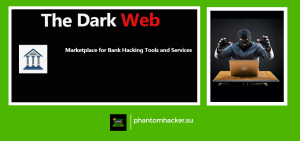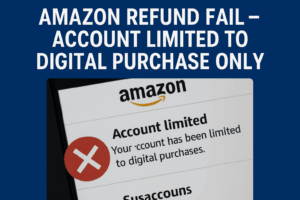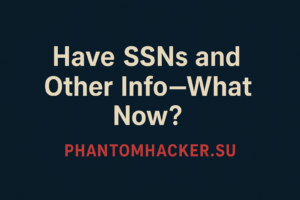The Escrow Illusion: Why Your Safety Net is Just a Rope Around Your Neck
They told you escrow meant safety. That it was the layer of trust between you and the wolves. That as long as the marketplace held the funds, you were good. Bullshit. I’ve watched entire crews go broke under the illusion of protection. The dark web doesn’t care about your optimism—it exploits it.
If you’re reading this, you’ve probably heard it too: “Use escrow, it’s safe.” But if you’re still saying that in 2025, you’re green—greener than a fresh dump of logs. Let me give it to you straight, from the mouth of someone who’s bled through every level of the digital underworld: escrow doesn’t stop scams—it just slows down how fast you realize you’ve been robbed.
🎭 Verified Vendor ≠ Verified Value
You hit a darknet market, see a vendor marked verified, thousands of completed orders, maybe even some pinned reviews. You feel a surge of confidence. You’re not a mark. You know what you’re doing. Right?
No. You’re the ideal mark. You’re walking into a trap laid by someone who’s played this game longer than you’ve known what “bank log” meant.
Let me break it down.
You buy a fraud product—let’s say a bank login. You pay with crypto, funds go into escrow, and you’re sent some credentials. You log in. Nothing. Invalid. Maybe even already drained. You hit dispute. You screenshot everything. The vendor responds: “You burned the log.” Or worse: “It was good when sent.”
The market admin? He doesn’t know what a valid log even looks like. He doesn’t know check-clearing timeframes. He doesn’t understand sock cleanouts, dead drops, session hijacks, or SE lingo. And even if he did—he doesn’t care. Because he’s not there to protect you. He’s there to protect the system.
🧠 Fraud is a Solo Game. If You’re Asking for Help, You’re Already Food.
Let me carve this deep into your skull: anyone who claims they’re selling “plug-and-play” fraud tools is lying. They’re not giving you a shortcut. They’re giving you a shovel and pointing to a hole.
There are no plug-and-play fraud tools that work. Not for long. You buy a fullz, it’s already been burned. You get a drop, it’s under surveillance. You get a check, it’s flagged. Why?
Because you’re not the first person to touch it. You’re the fourth, maybe the fortieth. That “authentic log” is a dead relic from an old breach dumped into Telegram groups and recycled a hundred times. Every second you rely on external sources, you bleed trust, you bleed time, and eventually—you bleed money.
No real fraudster buys fraud tools anymore. Real operators build them.
🕳️ Fake Escrow, Fake Products, Real Damage
Let’s talk about the silent killer: escrow copycats. There’s an entire subclass of scams designed to look like they’re happening inside a legit market—only they aren’t.
Scammers send links mimicking known market URLs. The login pages look right, the flow feels right, even the “escrow” interface works… until you realize you’ve been redirected to a lookalike site, and the moment you “send payment,” your funds vanish into a wallet with zero dispute system and no accountability.
If your OPSEC is weak, you’ll never know what hit you. Hell, even if your OPSEC is tight, one click can put you under. This is phishing, 2025-style—engineered for the jaded, not just the naive.
📦 “Proof of Delivery” Means Nothing in Digital Deals
Let’s say you somehow do transact through a real marketplace with real escrow. Doesn’t matter.
Here’s the dark truth: most darknet markets consider sending a digital good the same as delivering it, regardless of whether it’s functional. The vendor sends a PDF, .txt file, or login creds, and that’s it. That’s proof of delivery in their book.
What’s inside that file? Garbage. Burned logins. Bounced checks. Non-functional tutorials. Outdated guides that haven’t worked since 2021.
Try to file a dispute and watch how fast the vendor defends themselves: “They tried to cash the check wrong.” Or “They failed the method.” And just like that, you’re blamed for their garbage.
Even worse, many markets won’t allow a review once a dispute is opened—so you can’t even warn others.
💼 Fake Reviews, Faked Reputation, Real Theft
Don’t trust the five-star reviews. Anyone can make alt accounts, age them, make “purchases” from themselves, and leave glowing reviews.
That “top vendor” with 2,500 successful orders? Might’ve bought every one of them using cold wallets, fresh accounts, and a script that mimics customer feedback. The game isn’t about truth—it’s about optics. And if you think the admins don’t know, you’re even deeper in denial. Some marketplaces sell verified vendor status under the table. Don’t believe me? Ask anyone who ever sold on Empire before it imploded.
💣 Real Talk: There Are No Shortcuts
People want to skip the grind. They want to click “Buy Now” and get a fully working identity theft suite. Let me spell it out loud for the lazy:
There is no vending machine for digital crime. If you’re not building it, you’re not in it.
If you don’t know how to:
-
source your own CVVs
-
clean your own socks
-
rotate drop addresses
-
spoof devices
-
manipulate browser fingerprints
-
script automated sessions
-
conduct refund fraud with 2025-level security triggers
…then you are a customer in a place where customers exist only to be eaten.
This isn’t Amazon. There’s no customer service. No delivery guarantee. No help desk. It’s the jungle—and in the jungle, the soft get skinned.
⚠️ Real Cases from the Underground
Case 1: The “Authentic Bank Log” Trap
User pays 500 USD in escrow for a log supposedly from Wells Fargo. Log checks out on login. Balance: $17,000. Sounds like a dream, right? Until it locks 10 minutes later due to “suspicious activity.” The real trick? That vendor had a tool that generates temporary session access that looks real—enough to bait escrow. Once it’s locked, the vendor says, “You tripped security.” Dispute denied. Escrow released.
Case 2: Escrow Copycat Domain
User receives a vendor invite from “Escrow4U.market” (a spoof of “Escrow4.market”). The interface mimics the real thing perfectly. User sends $750 for CCs. The domain disappears two days later. Money gone. Vendor? Ghost. Turns out the user clicked a phishing link that rewrote the URL with an invisible character.
Case 3: Review Manipulation
One fraud market had over 60% of its top vendors using self-review rings. Once leaked in a private Telegram group, multiple accounts traced to a single seed wallet. These “top vendors” were actually one team running 15 identities, rotating sales between themselves to push visibility.
🔒 Final Word: Escrow is for Looks. Trust is for Fools.
If you take anything from this, take this:
The game is lonely. If you can’t do it solo, you’re not built for it.
You want to stop getting scammed? Stop buying. Start building. Learn how the system works from the inside. Reverse engineer fraud tools. Get dirty in code, sniff real traffic, build your own tools, and exploit weaknesses others aren’t even looking at.
And if you must buy, treat every deal like you’re walking into betrayal. Because that’s what you are.
No one’s protecting you but you.
Not escrow.
Not verification.
Not reputation.
Not a damn soul.








